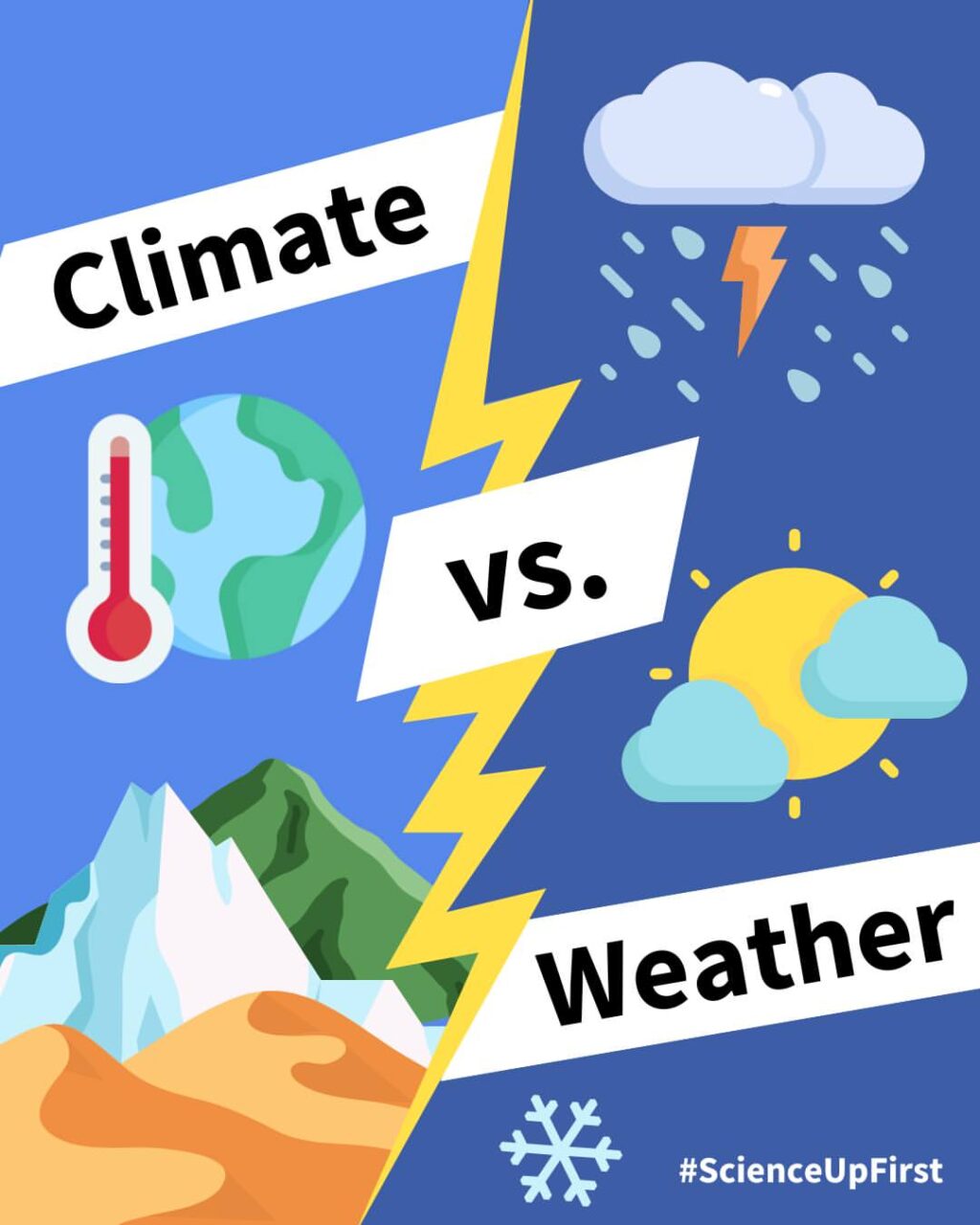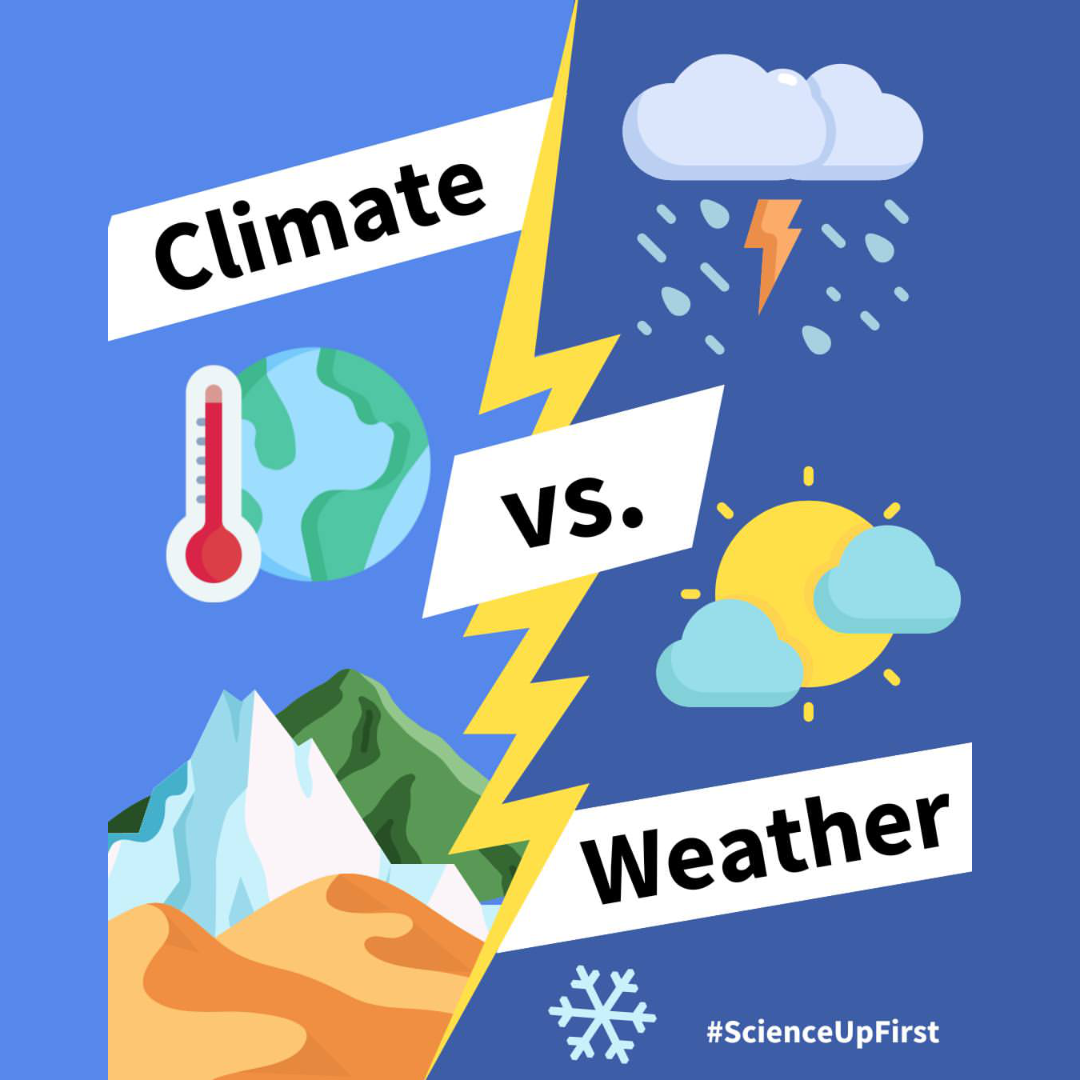
Climate and weather can be hard to differentiate, especially when we live in a country like Canada where we can experience extreme temperature variation in a short amount of time. But understanding the difference between the two is crucial to understanding climate change (1).
Weather describes the frequent, and sometimes rapid, variation in temperature, precipitation, and winds in an area at any given time (1-4).
Climate describes the long-term averages, in some cases 30 years or more, in weather conditions. It is relatively stable and determines the weather expected at a given time in a given area (1-4).
So while the two are related they are not the same – weather changes frequently and sometimes rapidly, while climate remains relatively stable (1,2).
For example, in Canada, it is expected that July will be warmer than February – that’s climate. However, whether you’ll need a rain jacket, a coat, a vest, or just a t-shirt will depend on the day’s weather. You might even have to change your outfit a couple of times in the same day because of the weather (3,5)!
When people talk about climate change, they describe a shift in the average weather conditions of a region over a long period of time (1-4,6,7). These fluctuations can occur within a few years (i.e. El Niño), but significant shifts typically happen over decades, centuries, or even millennia (2,3).
The changes in climate that we are experiencing right now are happening at a much faster rate than what our planet has experienced in the past due to human activities (2,3,6-8).
The difference between climate and weather explains why it is still possible to experience unusually cold weather in the winter even though our planet’s climate is warming up because of climate change (9,10).
Are there any other climate change basics you would like us to go over? Let us know!
- Climate vs. Weather | Climate Atlas of Canada
- Weather vs climate: What’s the difference? | European Space Agency (ESA)
- What’s the Difference Between Weather and Climate? | National Centers for Environmental Information (NCEI) | March 2018
- Causes of climate change | Government of Canada
- Canada – Climatology | Climate Change Knowledge Portal
- What Is Climate Change? | United Nations
- What Is Climate Change? | NASA Science
- Climate Change: The Basics | Climate Atlas of Canada
- If the world is warming, why are some winters and summers still very cold? | The Royal Society | March 2020
- Global warming is real, so why is it cold outside? | Yale Climate Connections | December 2020
Share our original Bluesky Post!
Is it climate or is it weather? It can be hard to tell the difference, you can read more about the finer details here👇 scienceupfirst.com/climate/clim… Questions about climate change? Tell us in the comments. #ScienceUpFirst
— ScienceUpFirst (@scienceupfirst.bsky.social) July 3, 2025 at 11:09 AM
[image or embed]
View our original Instagram Post!




